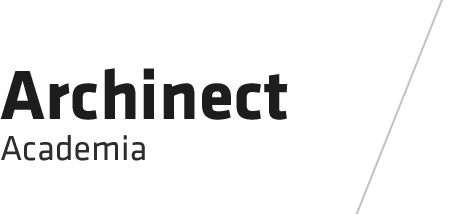
Columbus, OH
“I was surprised at the composite nature of the culture. It felt like Mediterranean Europe combined with 1950’s American pop culture infused with a tropical Caribbean style,” commented Jack Raymond, a junior architecture student on his return from a ten-day study abroad trip to Cuba. Spring break trips to Cuba, as well as Taiwan and Chile, offer new destinations for Knowlton School students to conduct research and learn in design-rich international locations.
Cuba offers a tale of two cities with contrasting architectural styles: colorful Spanish Colonial buildings stand among the stark utility of Stalinist-inspired Brutalism. Baroque churches, articulated colonnades and cobblestone roads that wind through Old Havana are surrounded by revolutionary-inspired structures that reference communist ideologies, with inventories of prefabricated, concrete slabs and minimalist expressions. Moorish and neo-classical influences add more texture to the built environment, acknowledging the country’s history of imported styles.
Given the prevalence of open-air spaces such as plazas, courtyards and balconies, senior landscape architecture student Desiree Angelotta commented: “I feel that architecture and landscape architecture in Cuba go hand-in-hand because of the blurred lines between exterior and interior space.” Cuba’s latitude creates an architectural environment that takes into consideration the climate where a building’s program may extend outdoors. “Design elements, such as large overhanging eaves and balconies, often extend beyond the building envelope,” Raymond stated. “You could also see firsthand techniques such as a brise-soleil, which allows you to maximize the light that enters the building, as well as reduce the heat.”
At speeds up to 182 miles per hour, planning students on the Moving (and Eating) Around Taiwan trip sped through Taipei and various municipalities to experience the island nation’s renowned bus, subway and high speed rail systems. The districts in the Taipei region have among the highest densities of residential, office and commercial land use in the world. Taipei’s tight, mixed-use urban form relies on public transportation that serves as a model in the study of transit-oriented development and "smart growth."
“I was very interested in experiencing the culture surrounding transit in Taiwan,” commented first-year MCRP student Andrew Nuetzling. “For example, displays and animated signage in stations teach people how to occupy spaces in transit systems in a polite and efficient manner.” A culture of respect translates into an orderly transit experience. Clearly demarcated spaces located at subway platforms and bus stops indicate where travelers should wait for a specific line. Signage is translated in several languages. “I’ve been to many subway stations in Mexico and the Unites States where people are rushing and pushing to get on and off a train. You don’t see that in Taipei,” commented Juan Mendive, a first-year student in the MCRP program. “Everyone follows the rules.”
When not dining on Taipei’s eclectic Asian cuisine, which included servings of fried bullfrog and thousand-year-old egg (egg aged in ash and salt for a month), students met with urban designers and visited the offices of Taipei City's Mass Rapid Transit System and Taiwan High Speed Rail (THR). After reaching the city of Kaohsiung on the THR, Mendive indicated the group “met with transit officials, who offered a tour of their facility and operations room, and then shared information on how they operate and implement their transportation system. And later, we had fresh seafood for dinner.”
“My favorite site was the Monasterio Benedictino Santísima Trinidad de Las Condes. This monastery was perched up in the Andes mountains overlooking the valley and city below,” commented second-year architecture student Anthony Iovino. Students on the Santiago, Chile Culture and City trip explored the history, landscape and architectural environment of Chile’s capital and largest city. With Santiago serving as a base, students took daytrips to the coastal city, Valparaíso, and into higher elevations, visiting Adolfo Ibáñez University, where they toured the school’s architecture facilities and studio. A highlight of this daytrip was a visit to the Monasterio Benedictino de la Santísima Trinidad de Las Condes, its white volumes and the character in which they are penetrated by light suggesting classic examples of architectural simplicity and luminosity.
While in Santiago, students were assigned to work in small groups to analyze the architecture, landscape architecture and overall urban design of specific street clusters. Research was focused on topics of precedent, materials, design and the mixed-use functionality of commercial and residential buildings. Despite the devastating effects of earthquakes on Chilean structures, contemporary designs in Santiago are flourishing, most notable in the urban projects of Alejandro Arevena, recipient of the 2016 Pritzker Prize.
“I think in the architecture field it's important to be well traveled because it helps one discover and explore other design solutions,” Iovino explained following his trip to Chile. Raymond amplified this benefit of learning in close proximity to the built environment: “When we were on site it was easier to have analytical conversations than when we were in studio. You can point to features and details of a building that come up in discussion.”
In considering graduate schools, second-year MCRP student Jamie Roberts looked for programs that would allow her to focus on her interest in transit systems. “When I became aware of this trip it really sold me on the MCRP program at the Knowlton School. I thought, ‘Great, I can go abroad and have an excellent transit experience. Other programs didn’t offer this opportunity.’”
In addition to spring break trips offered by the Knowlton School, students have the opportunity to travel abroad over winter break and during the months of May and June, exploring the designs and urban forms of cities across the globe.
No Comments
Block this user
Are you sure you want to block this user and hide all related comments throughout the site?
Archinect
This is your first comment on Archinect. Your comment will be visible once approved.